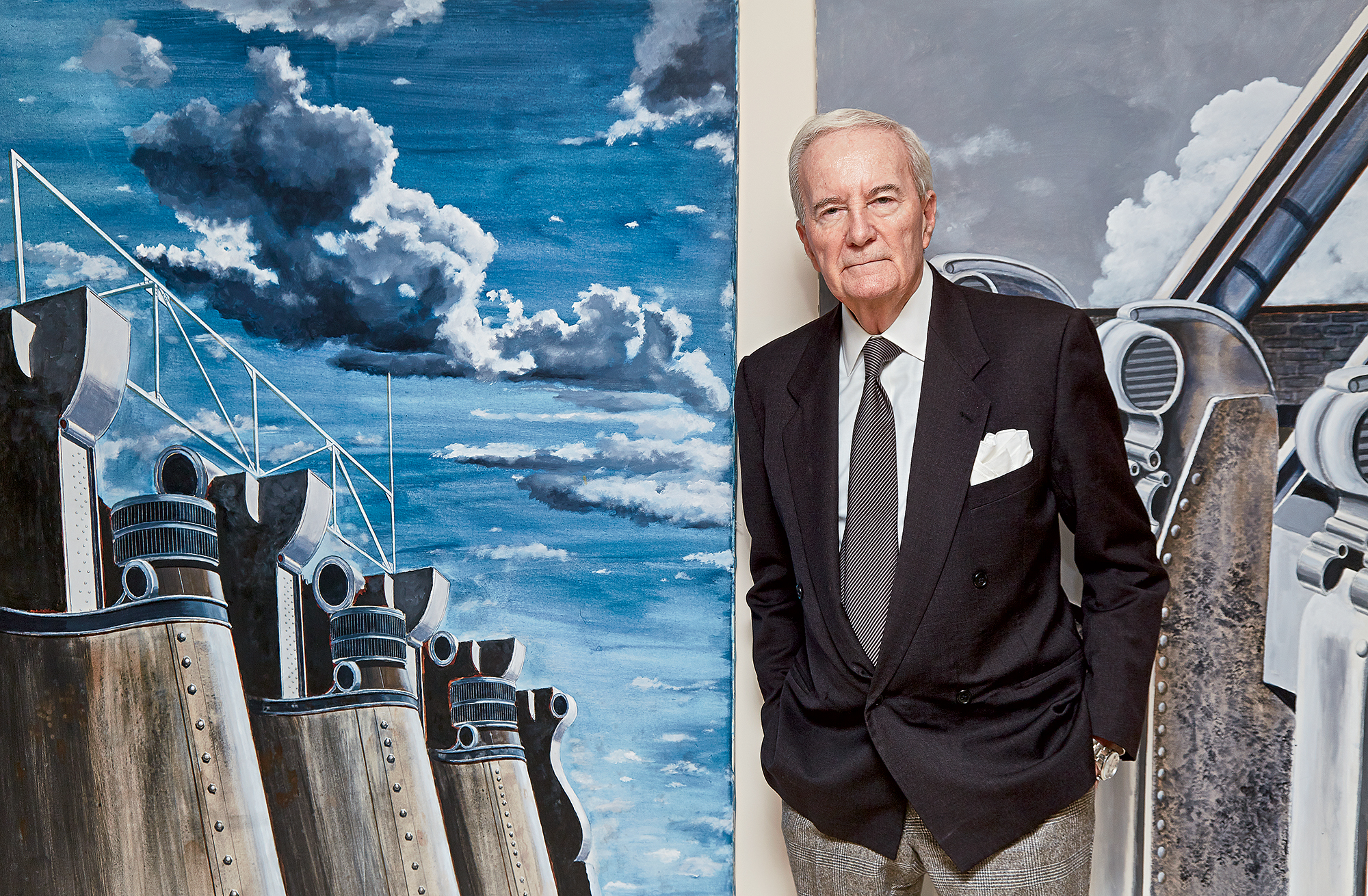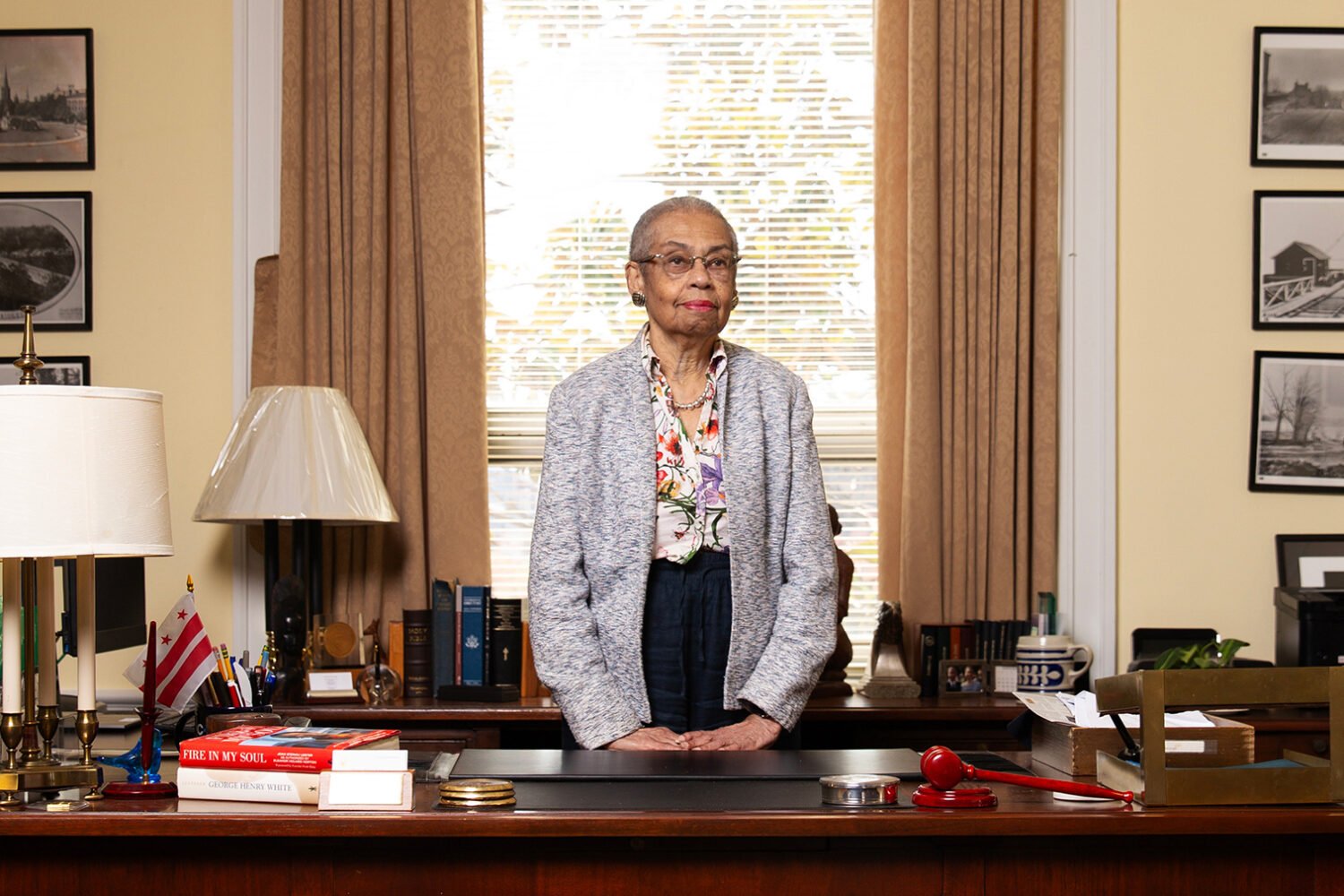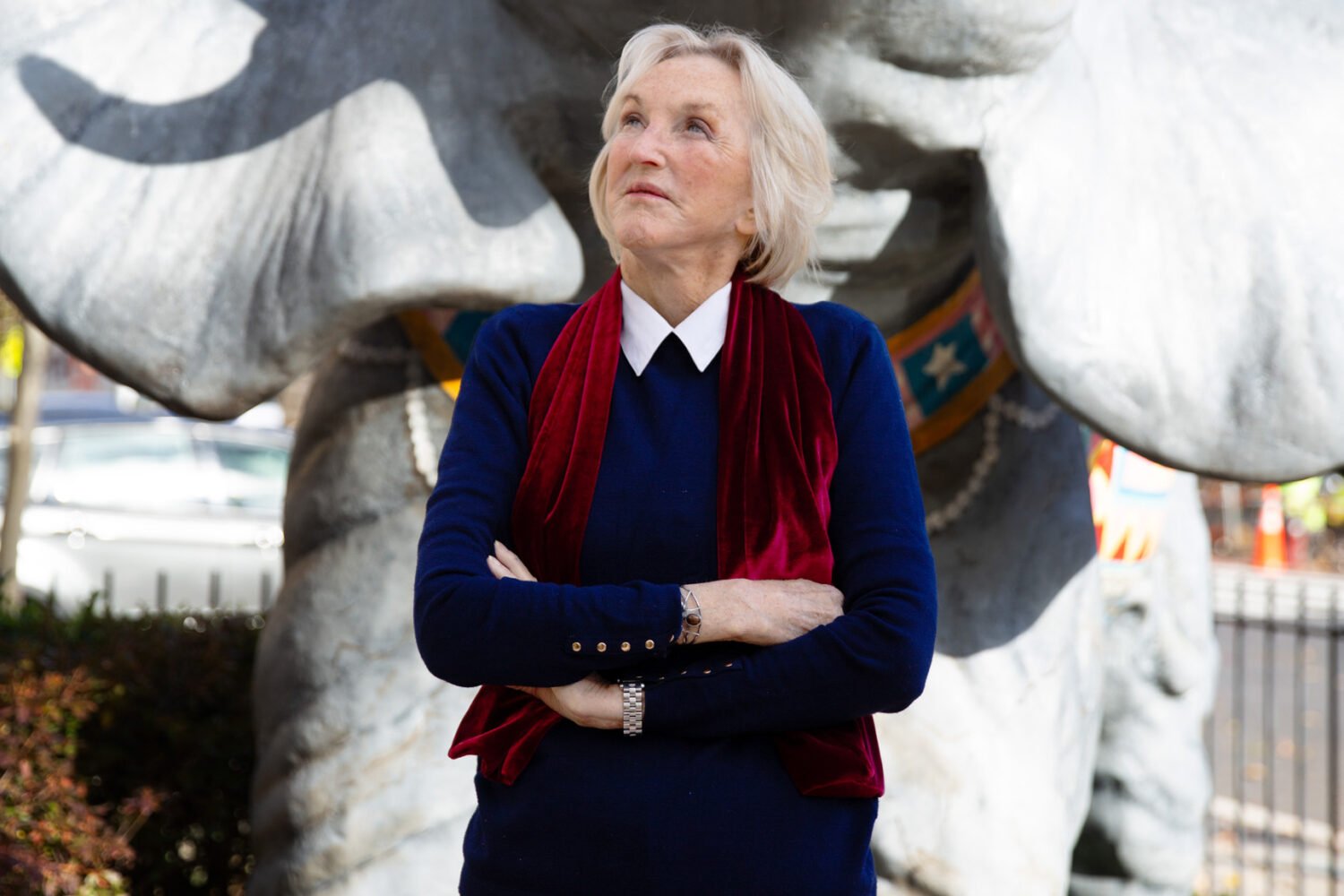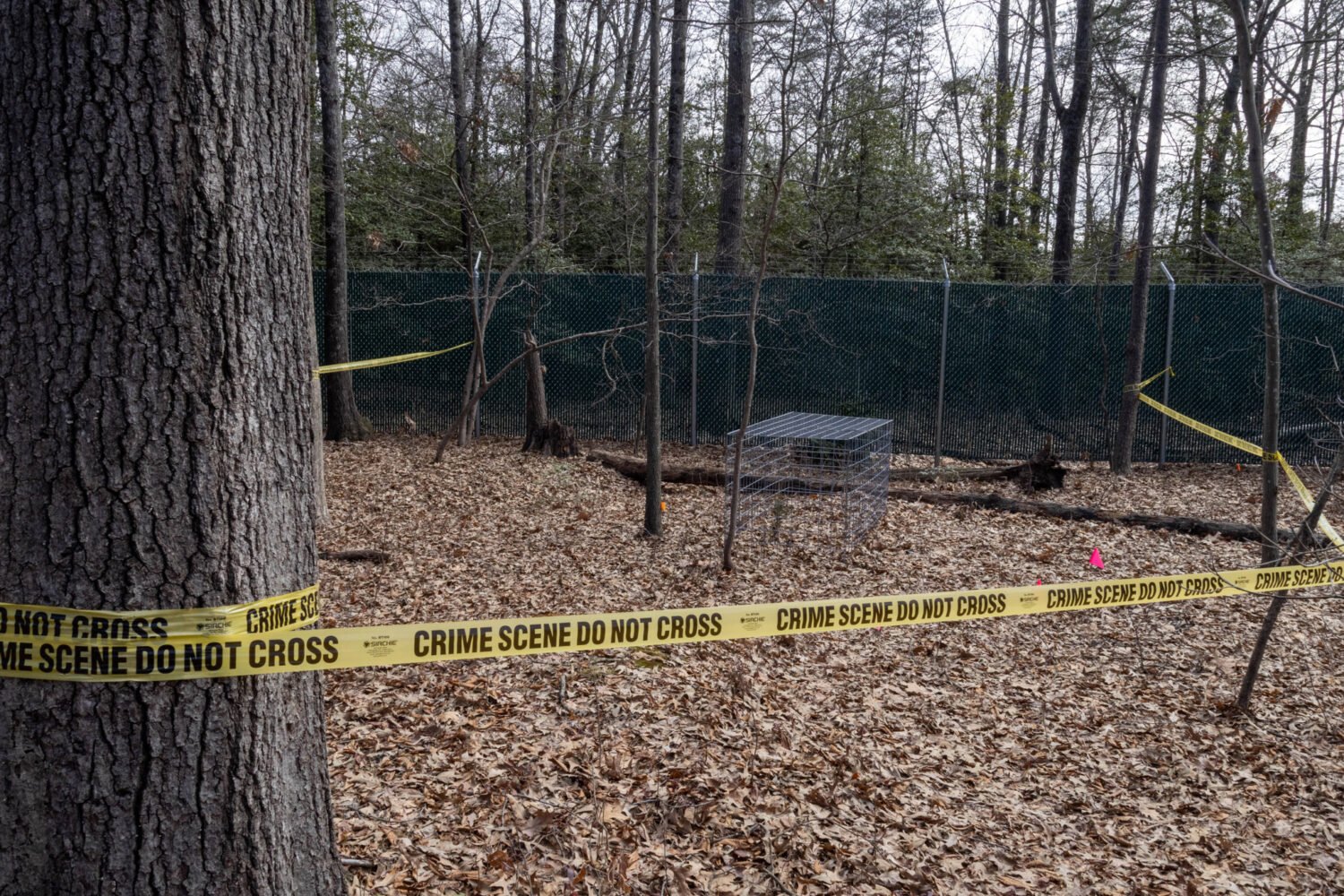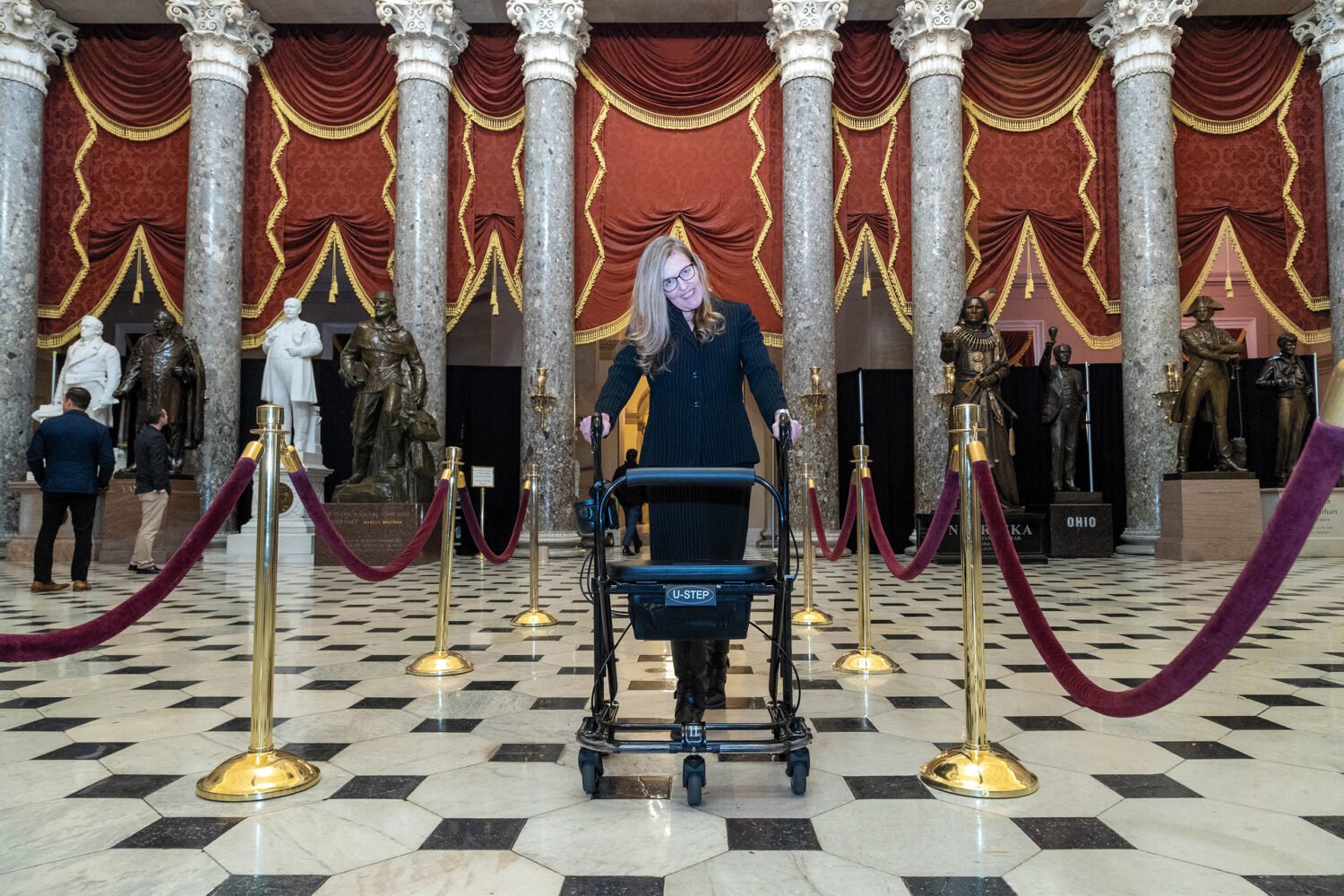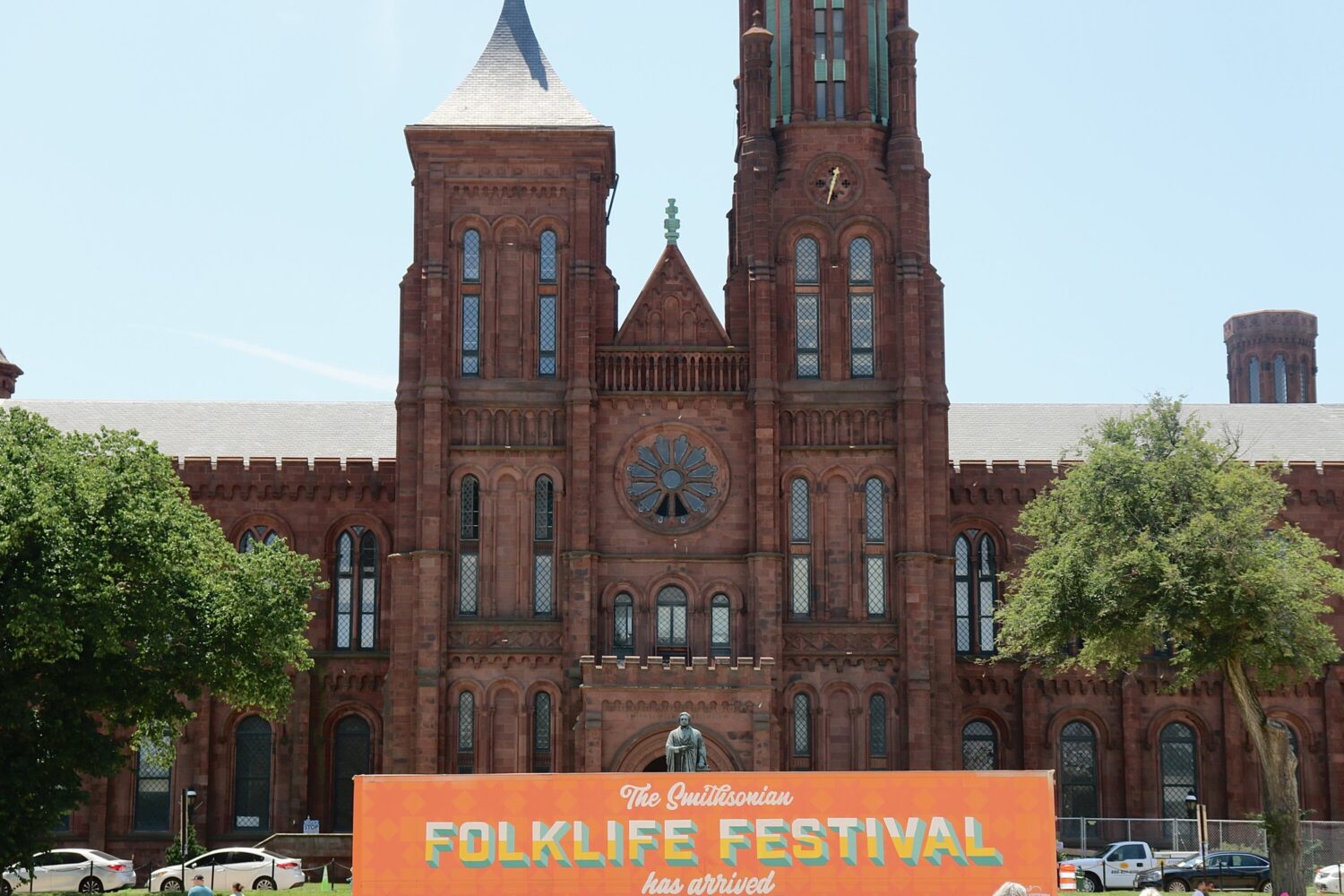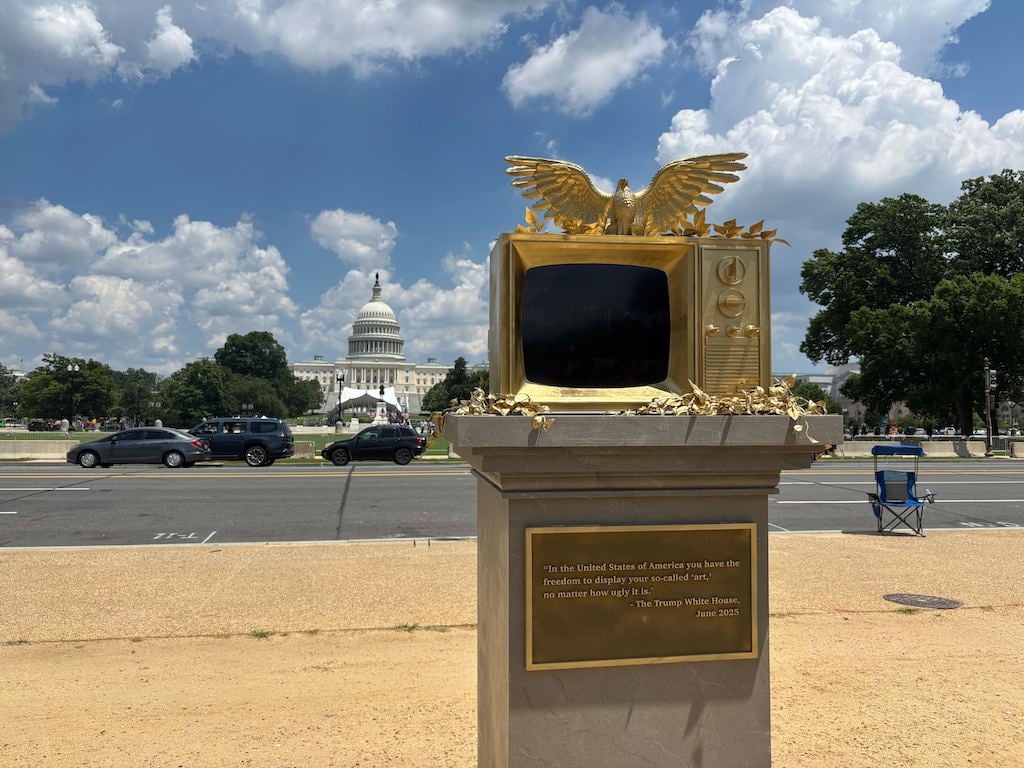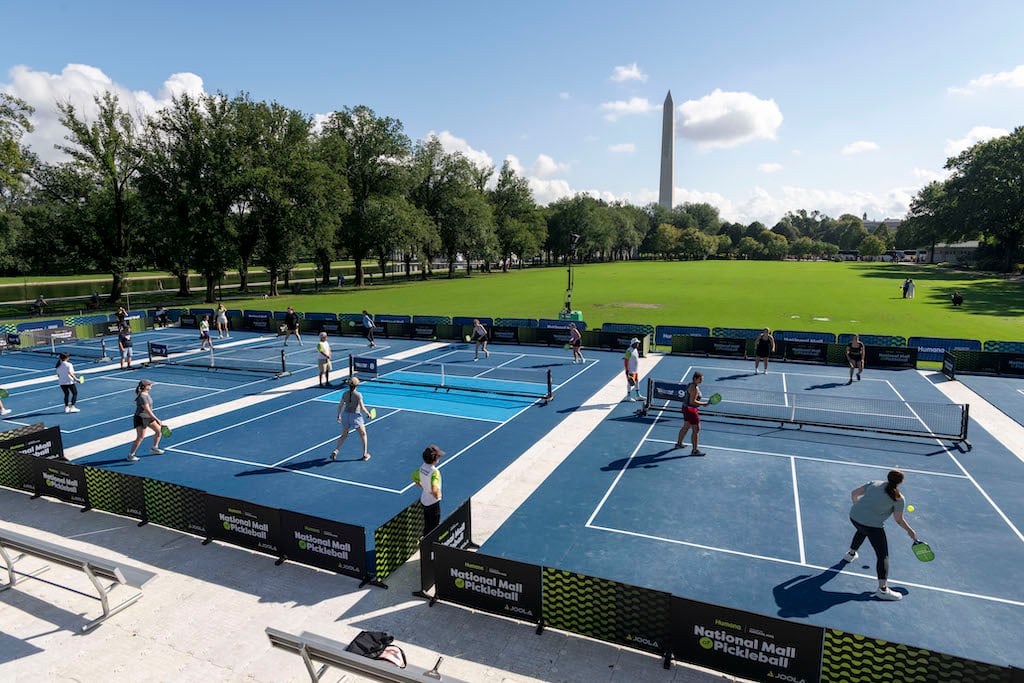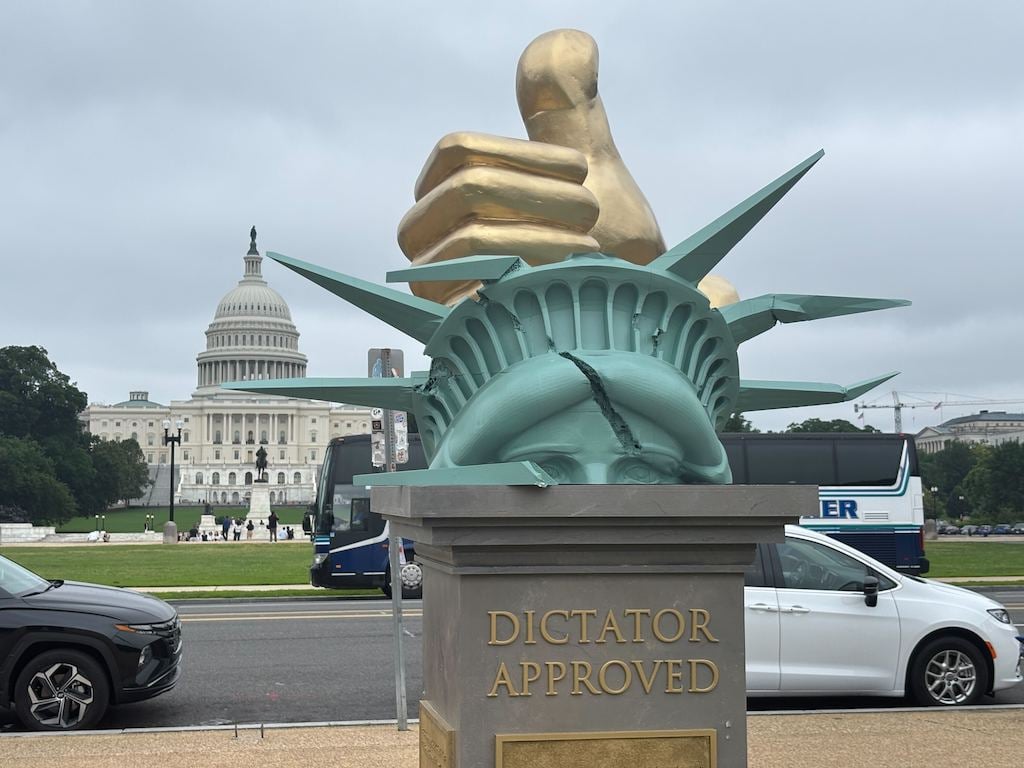Contents
At 83, Arthur Cotton Moore is one of Washington’s most esteemed architects. The sixth-generation Washingtonian oversaw Georgetown’s Washington Harbour development and contributed to major renovations at the Phillips Collection, the Library of Congress, and other projects.
In addition to his commissioned work, Moore has spent years dreaming up suggestions for ways to improve the city. Some of those schemes appeared in the pages of this magazine. (Moore contributed a piece to the inaugural issue of Washingtonian in 1965.)
These days, his best-known fantasy project is actually in the news: In the 1970s, he spearheaded an effort to save the Old Post Office from demolition, with the vision of turning it into a hotel. The building was spared, though Moore’s resulting redevelopment featured shopping and a food court, not a hotel. But in 2012, he helped the Trump Organization win the competition to spearhead a second redesign. Moore soon left the team and says he hasn’t seen the completed Trump International Hotel: “I would see too much of what we had done in the ’80s and ’90s changed. And I’m not given to a lot of chandeliers.”
More frequently, the architect’s musings haven’t made it past the unsolicited-drawing board. But he has held onto his favorites. Now he has collected some of those notions in a new book, Our Nation’s Capital: Pro Bono Publico Ideas. To hear more about his thinking, we dropped by his well-appointed penthouse at the Watergate, where he discussed his vision for the city as we watched the sun set over the Potomac.
Disaster-Proofing (and Bus-Proofing) the Mall

Idling tour buses and global warming would seem to occupy opposite ends of the spectrum of local quality-of-life afflictions. This scheme—a huge underground structure beneath the National Mall—would tackle both challenges at once. First, it would offer more than 1,000 parking spaces. Second, it would help protect Washington’s landmarks from the more frequent floods that climate change is likely to bring to low-lying areas such as the Mall. When needed, the lot could be cleared out to hold millions of gallons of floodwater and help prevent damage to the memorials and the rest of the city. “When you have very heavy rains, three days of rain . . . which everybody says is going to happen more and more, the water collects there,” says Moore. “The solution is to create basically a big cistern under the Mall.”
An Arts Center in Anacostia
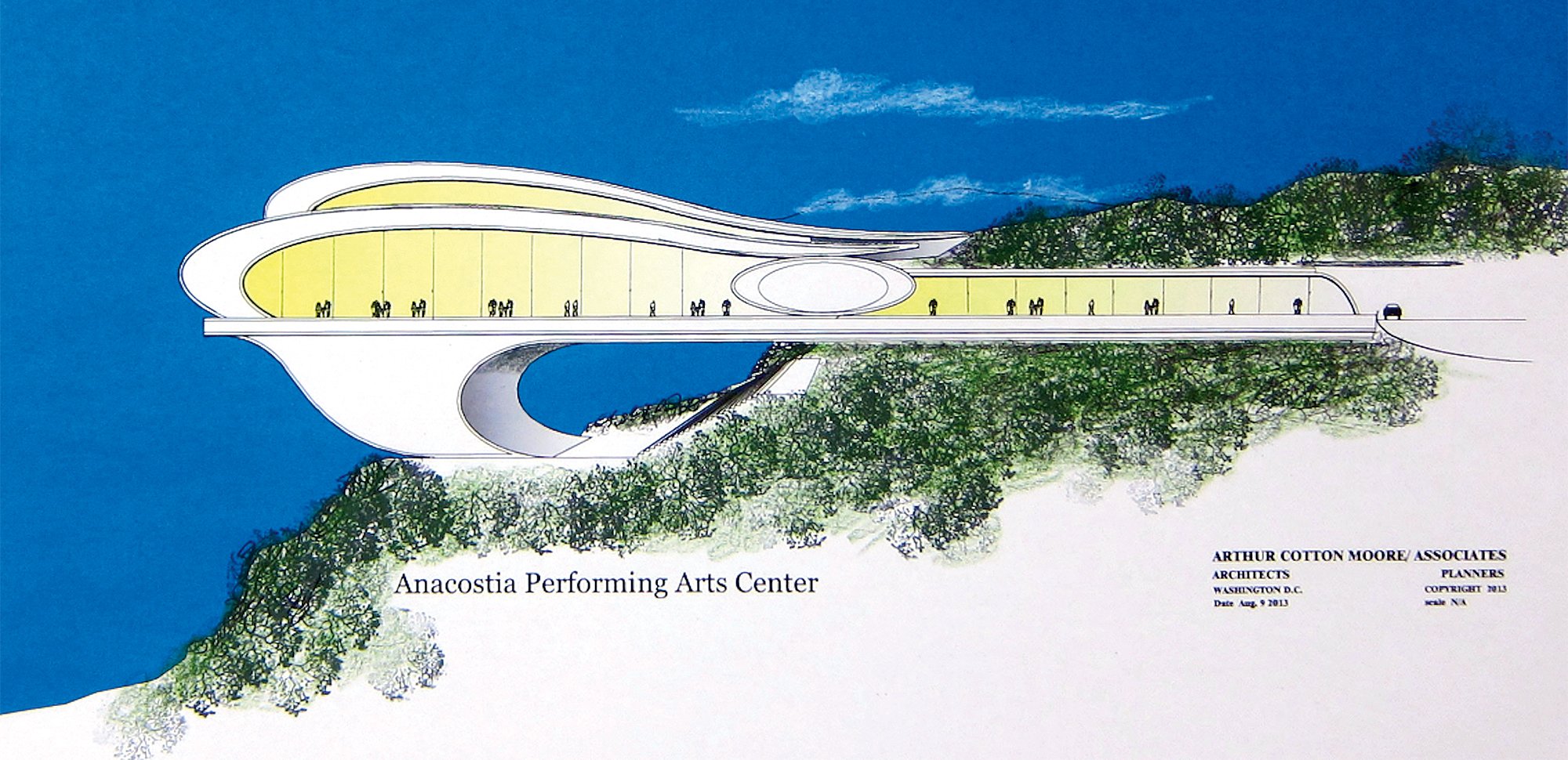
In 2013, Moore got a call from Marion Barry, then a DC Council member, who told him that “Anacostia could use a place for music and dancing and theater productions.” Barry—who’d been may-or when Moore received many of his highest-profile commissions—asked him to draw up some ideas for a performing-arts center at a site just north of what had once been the east campus of St. Elizabeths Hospital. Moore designed a space that would take advantage of the spot’s impressive view of the city. The project was cut short by Barry’s death, Moore says. Mayor Muriel Bowser announced in 2015 that the campus would be the new home of the Washington Mystics and a practice facility for the Wizards.
Back to TopConnecting the Kennedy Center to the River
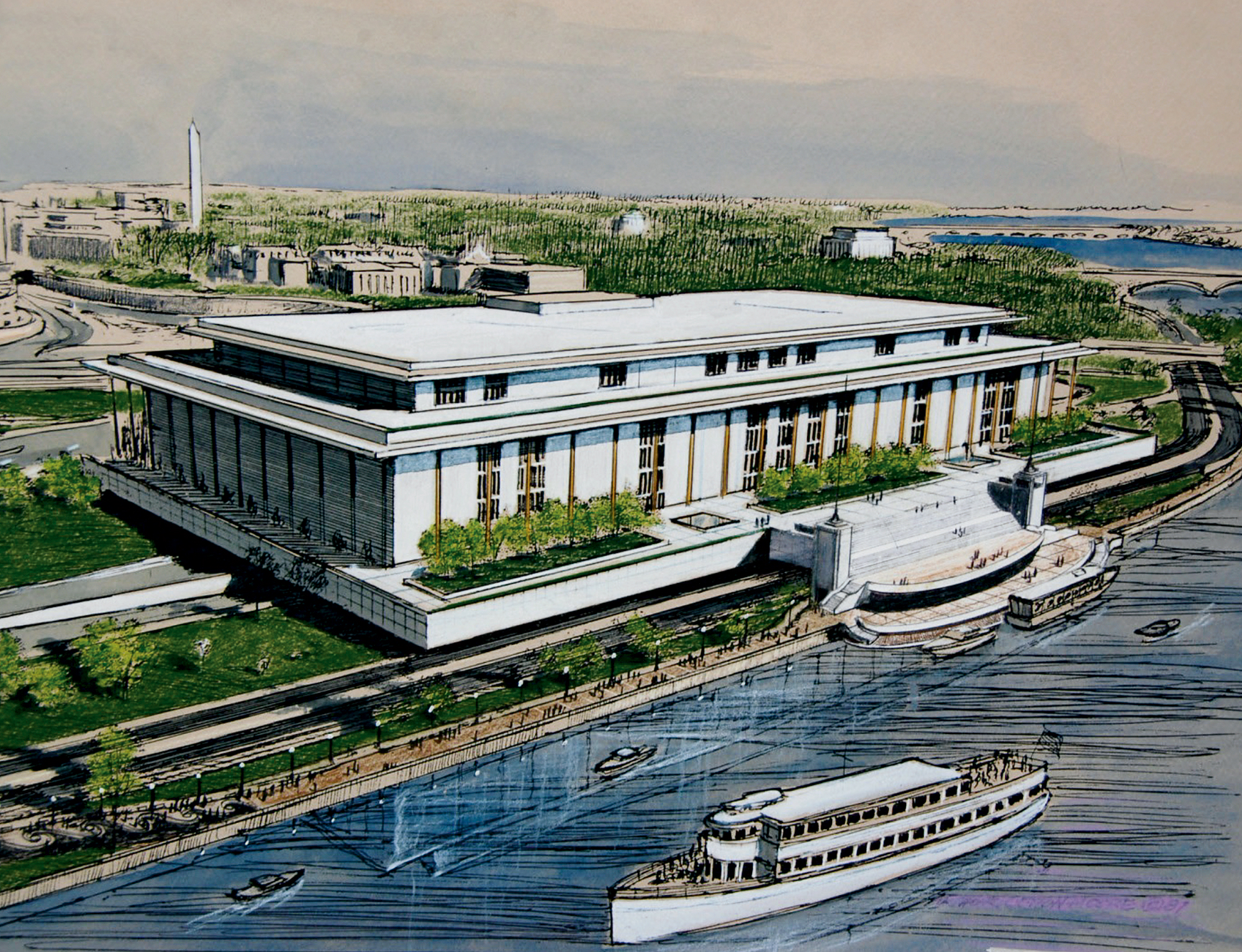
For many years, Moore has enjoyed having drinks on the roof of the Watergate, which overlooks the Kennedy Center next door. That view, along with a fascination with the best ways to use the riverfront, led him to concoct an improvement for a building that often seems cut off from the city around it: Why not add a wide staircase to link the performing-arts center’s cantilevered terrace with the Potomac? The impressive set of steps would help unify the river and the city. It would also give the building a better sense of a “relationship to the ground,” as Moore puts it. “Steps do that.” The idea garnered support in the 1980s but fell victim to some-thing Moore has seen quite a bit during his career: “One thing that happens always in Washington is that people leave and other people come in [to positions of power]. The Kennedy Center kind of pulled the plug on the whole thing.”
Make Room for New Monuments
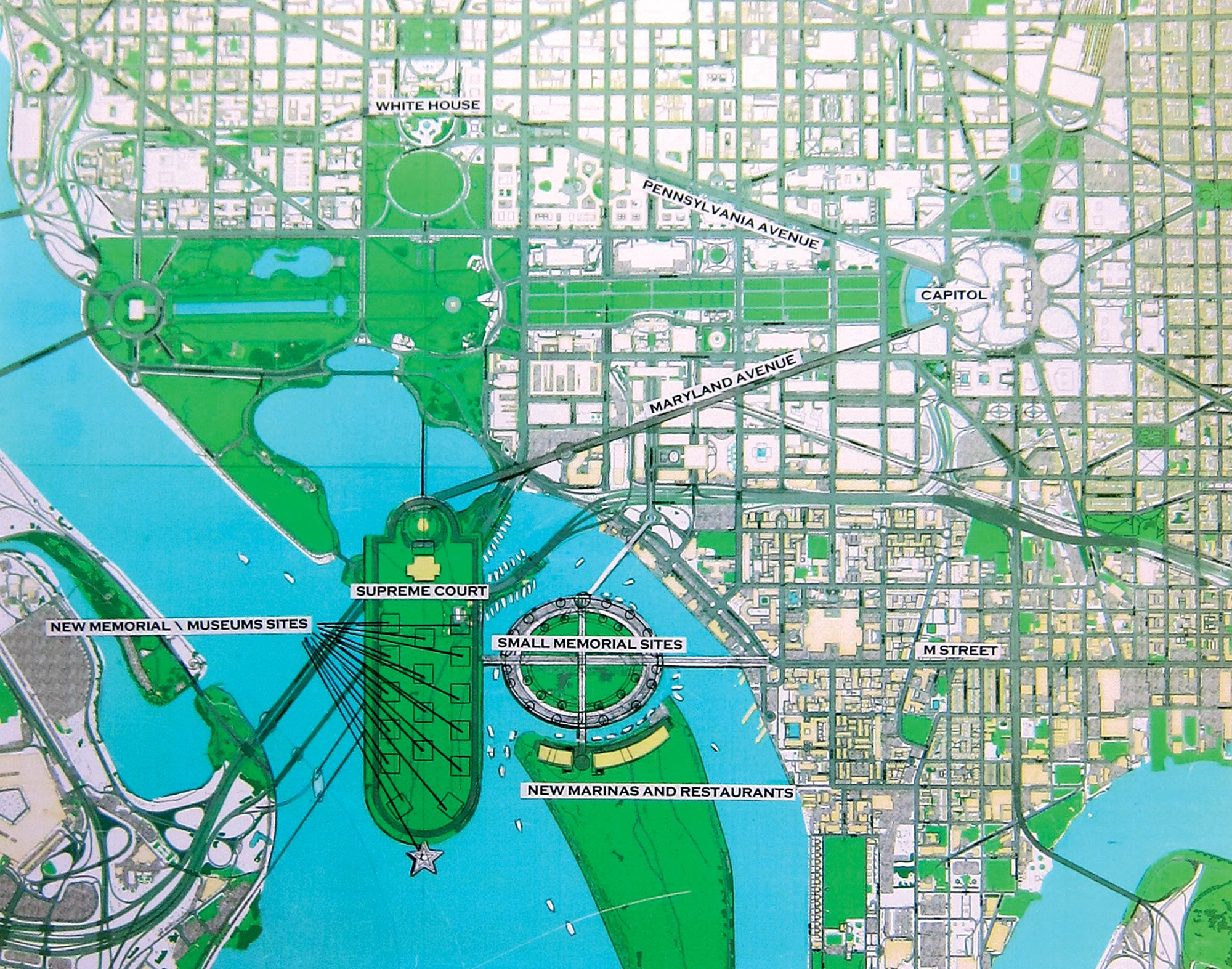
For decades, Washington has had to wedge new memorials and museums onto the dwindling amount of open space on the Mall. Moore’s solution: create more Mall. This plan proposes to add to the city’s monumental core by expanding the Mall over parts of the Potomac, a scenario that could open up space for 20 museums and memorials. He also proposes relocating the Supreme Court building from its current spot on Capitol Hill to the tip of Maryland Avenue, creating a “striking triangle” to connect the structures that represent our three branches of government—the White House, the Capitol, and the Supreme Court. There’s some precedent for the idea. In 1901, the McMillan Commission expanded the original Mall to create a site for the Lincoln Memorial by filling in part of the Potomac.
Another Boulevard
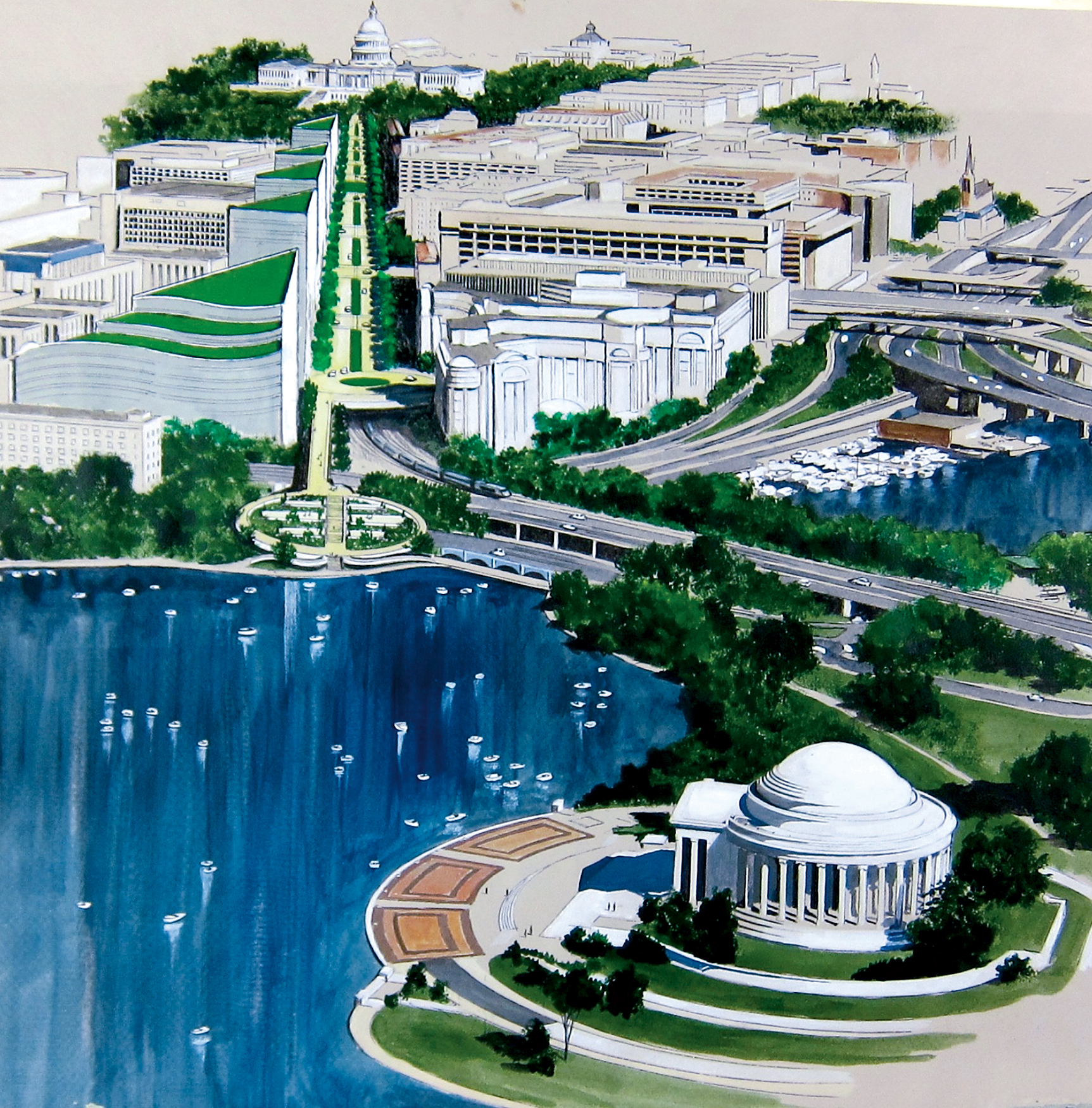
While making space for more Mall, Moore would also create another grand street: The scheme would make Maryland Avenue a prominent thoroughfare lined with shops and apartments. In addition to bringing much-needed new housing to the District, the idea would complete the classical plans by the city’s designer, Pierre L’Enfant, and the McMillan Commission, which created the Mall we know today. (Of course, the original planners didn’t contemplate this revived avenue reaching Moore’s relocated Supreme Court.) Why should modern Washingtonians care about these centuries-old proposals? “Most cities happen accidentally, but this was created,” he says. “The plan is the basis for everything.”
This article appeared in the May 2018 issue of Washingtonian.
